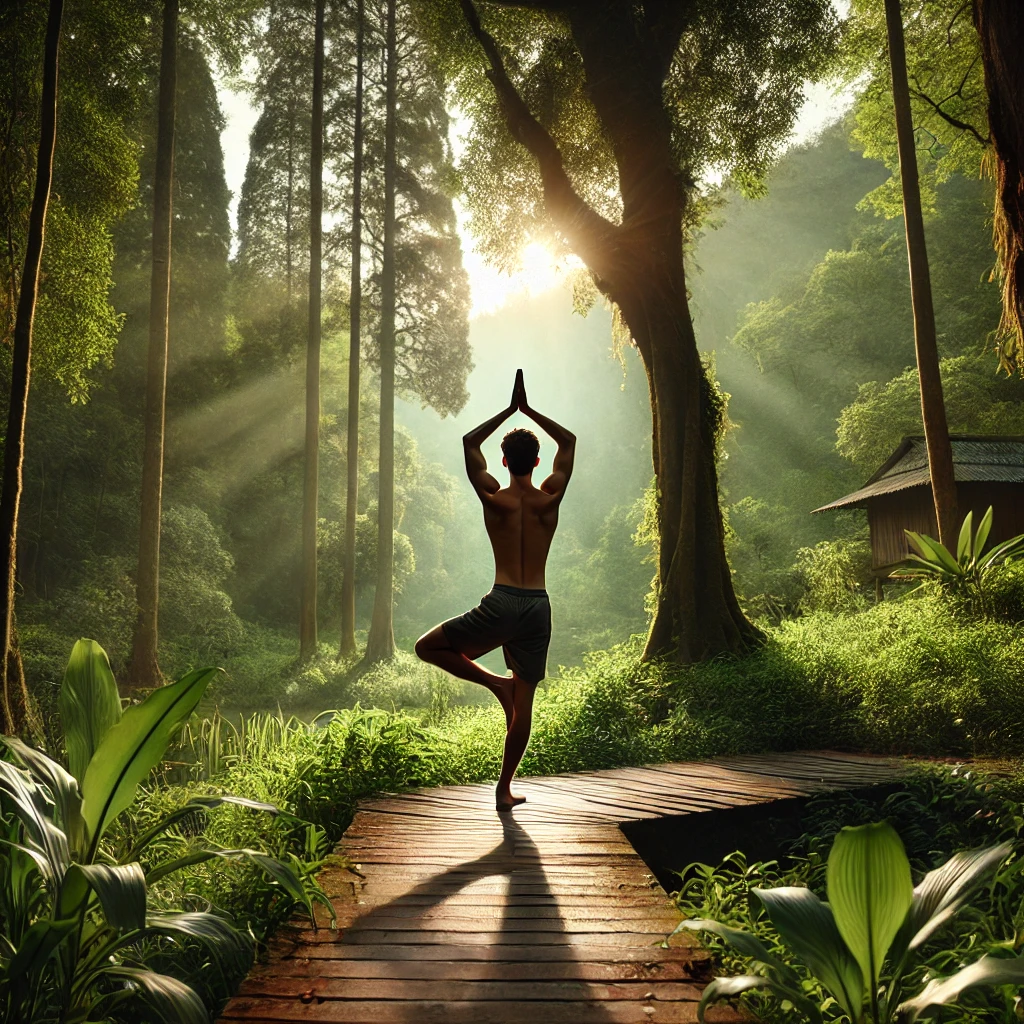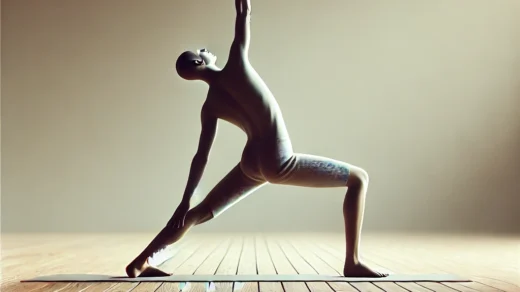Vrikshasana is a yoga pose that derives its name from the Sanskrit word “Vriksha,” meaning tree. In this pose, the body resembles a tree standing still, reflecting balance, strength, and grace. Practicing Vrikshasana regularly can bring calmness to the mind and improve physical stability.
Table of Contents
Steps to Practice
To perform Vrikshasana effectively, follow these steps:
- Prepare Your Posture:
- Stand straight with your feet about 2 inches apart.
- Focus on a fixed point in front of you to maintain balance.
- Position Your Legs:
- Exhale and bend your right leg.
- Place your right foot firmly on the inner side of your left thigh. Make sure the heel touches the perineum (the area between the genitals and anus).
- Raise Your Arms:
- Inhale and stretch your arms upward.
- Join your palms together in a namaskara mudra (prayer position) above your head.
- Hold the Pose:
- Stay in this position for 10 to 30 seconds.
- Breathe normally while maintaining your focus and balance.
- Return to Starting Position:
- Exhale and slowly bring your arms down.
- Lower your right foot to the ground and relax.
- Repeat with the Other Leg:
- Perform the same steps with your left leg.
Important Dos and Don’ts
While practicing Vrikshasana, keep the following points in mind:
Dos:
- Breathe normally while holding the pose.
- Keep your body relaxed but stable.
- Focus on a point to maintain balance.
Don’ts:
- Avoid this pose if you have knee pain or ankle injuries.
- Do not strain yourself to hold the posture for too long if you feel discomfort.
Benefits
Practicing Vrikshasana regularly can benefit both your body and mind. Here are some key advantages:
- Improves Joint Flexibility:
- Vrikshasana enhances the flexibility of the knee and ankle joints, making them stronger and more stable.
- Strengthens Muscles and Ligaments:
- It tones the leg muscles and rejuvenates ligaments, helping in overall lower body strength.
- Relieves Pain and Discomfort:
- This pose can aid in reducing rheumatic pain and numbness, improving comfort in daily activities.
- Boosts Concentration:
- Focusing on balance in Vrikshasana helps improve mental clarity and concentration, making it beneficial for students.
- Promotes Calmness:
- The stillness and focus required in this pose bring a sense of inner peace and relaxation.
Tips for Beginners
If you are new to Vrikshasana, here are a few tips to help you:
- Use a wall for support if you struggle with balance.
- Start by holding the pose for a shorter duration and gradually increase the time.
- Practice barefoot to enhance grip and stability.
Who Should Avoid Vrikshasana?
Although Vrikshasana is generally safe, some people should avoid it under specific conditions:
- Those with severe knee pain or injuries.
- Individuals with ankle injuries.
- Anyone feeling dizzy or unsteady.
Conclusion
Vrikshasana is more than just a physical exercise; it is a practice that aligns your body and mind. Regularly incorporating this pose into your routine can improve flexibility, concentration, and overall well-being. Whether you are a beginner or an experienced practitioner, Vrikshasana offers a simple yet powerful way to enhance your physical and mental health. Take your first step today and experience the transformative benefits of the Tree Pose!
Subscribe to us on YouTube and try our quizzes on this website to keep your exam preparation on track.



